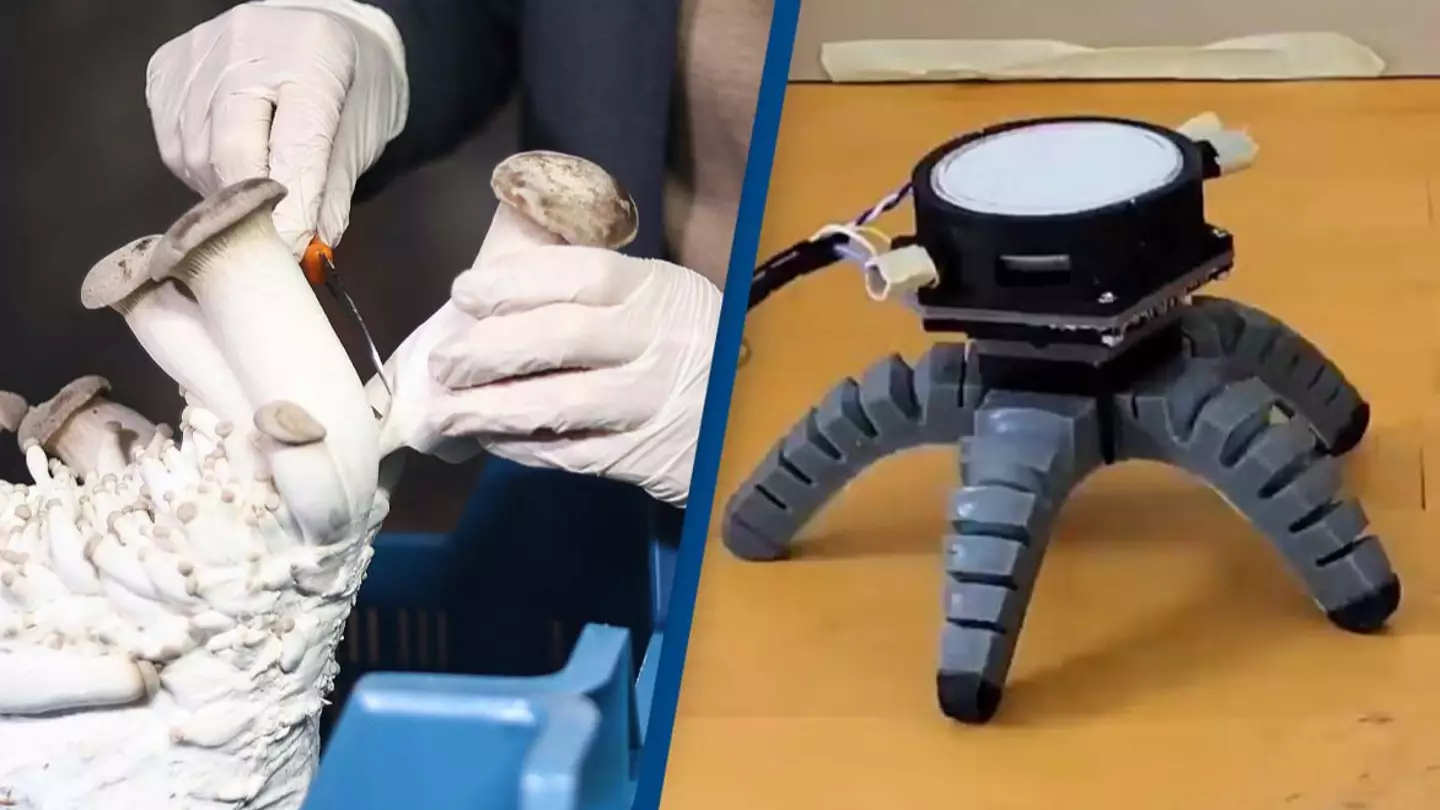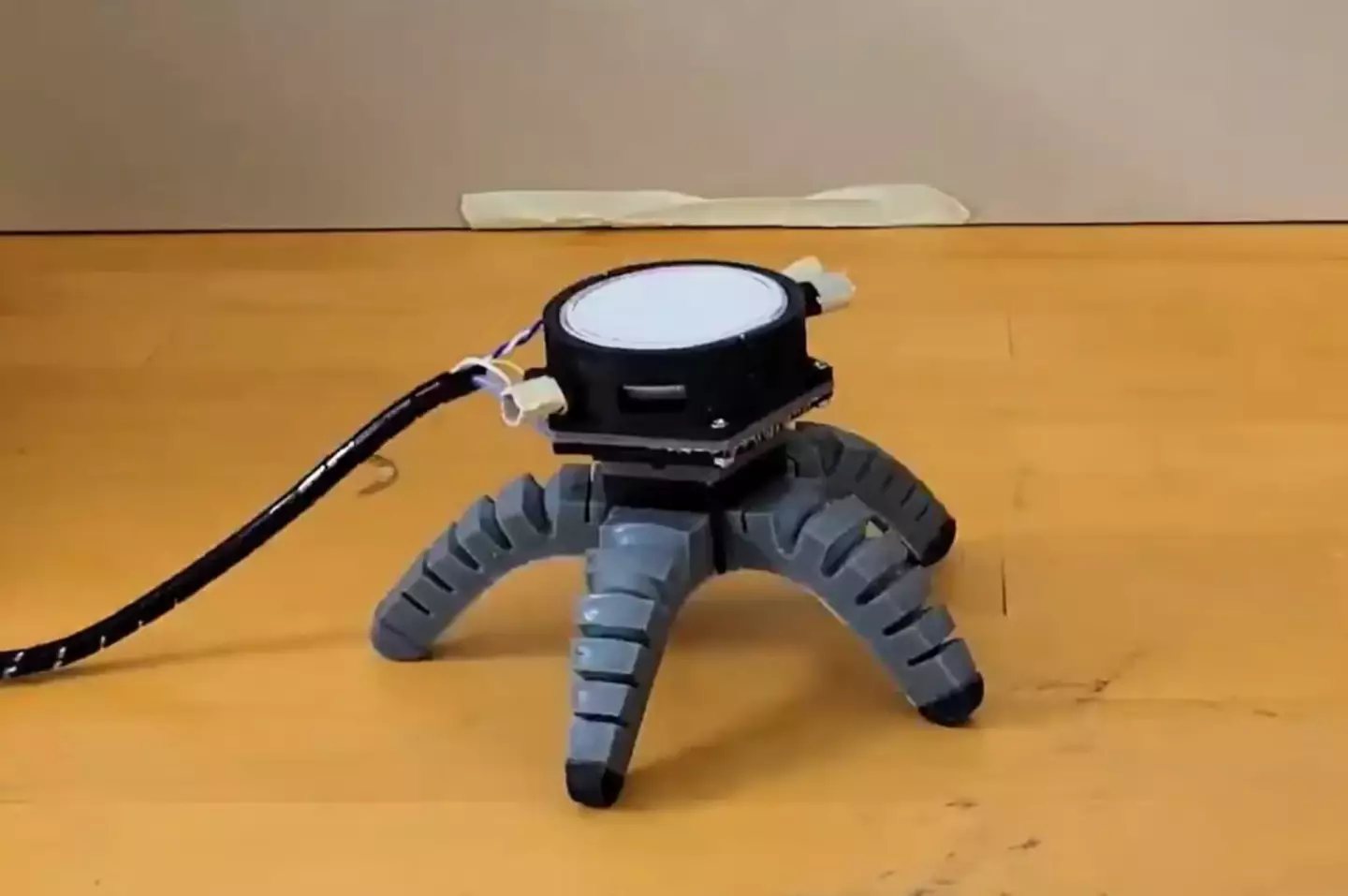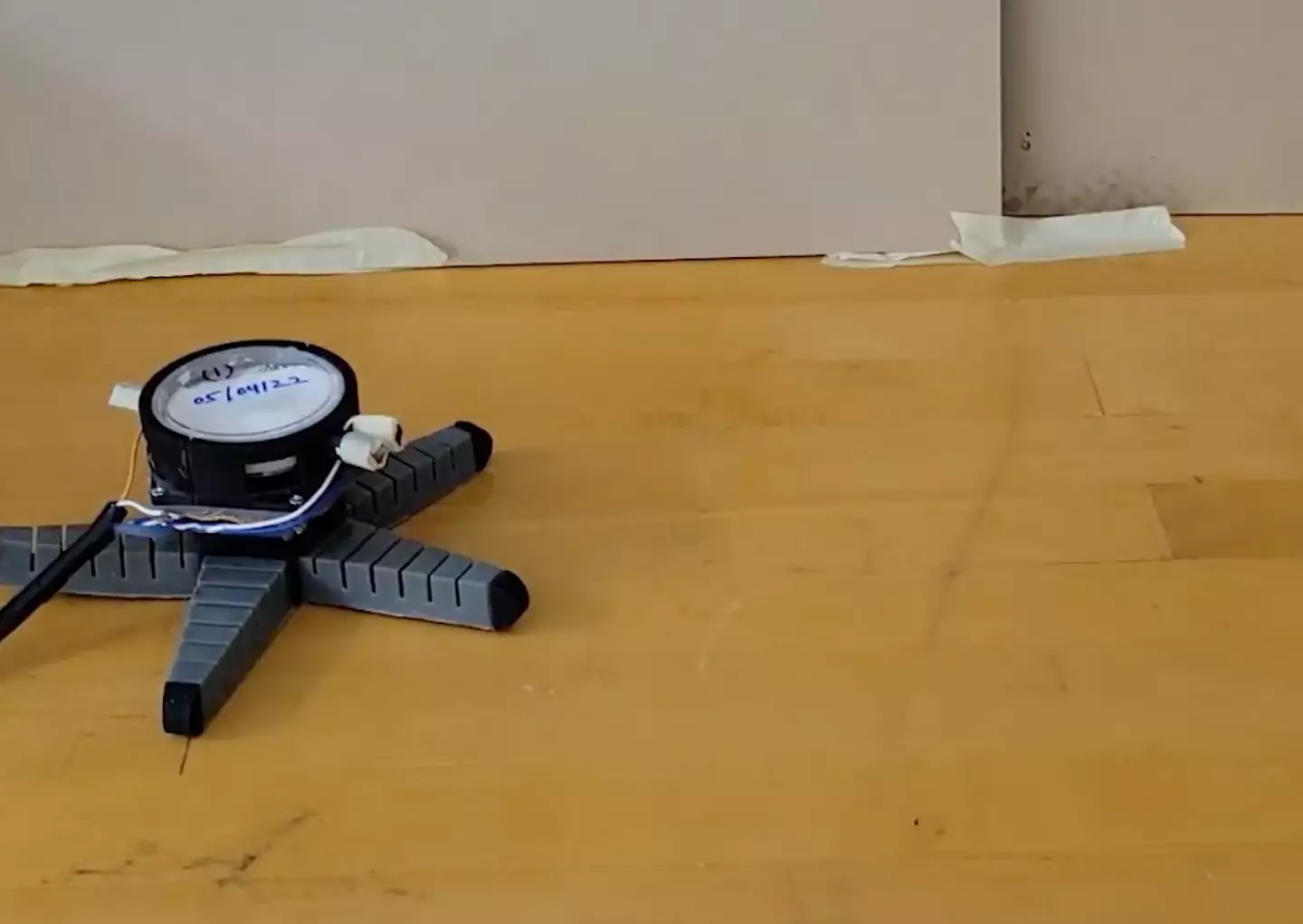
Topics: Science, Technology, Robotics, Artificial Intelligence

Topics: Science, Technology, Robotics, Artificial Intelligence
Ever thought what a mushroom paired with a robot body would be able to get up to?
Well, it's your lucky day.
The boffins over at Cornell University in the US and Florence University in Italy have worked their magic to create the incredible piece of tech.
Advert
Experts have created two different robots that respond in impressive ways to the environment.
First of all, they trap the electrical signals made by the fungus, which also reacts to light.
Those who have worked on the project hope it will usher in a new era of living robotics.

Advert
Robert Shepherd, a senior author of a study published in Scientific Robotics last month, said: "Mechanisms, including computing, understanding and action as a response, are done in the biological world and in the artificial world that humans have created, and biology most of the time is better at it than our artificial systems are."
Meanwhile, Anand Mishra, who works as a research associate in the Organic Robotics Lab at Cornell, added: "Living systems respond to touch, they respond to light, they respond to heat, they respond to even some unknowns, like signals.
"That’s why we think, OK, if you wanted to build future robots, how can they work in an unexpected environment? We can leverage these living systems, and any unknown input comes in, the robot will respond to that."
A video released by the team behind the robot saw the machine moving across a surface, though at the pretty slow pace, mind.
Advert
Essentially, the robots were able to move due to the electrical spikes produced by the mushroom.
Add ultraviolet to the mix, and you've got a pretty interesting dynamic.

Shepherd added: "Mushrooms don’t really like light. Based on the difference in the intensities (of the light) you can get different functions of the robot. It will move faster or move away from the light."
Advert
We've only really seen such robotics used in the likes of humans and animals in the past, so this latest development really is a big breakthrough.
Victoria Webster-Wood, a professor in the filed who was not involved in the study, added: "Fungi may have advantages over other biohybrid approaches in terms of the conditions required to keep them alive.
"If they are more robust to environmental conditions this could make them an excellent candidate for biohybrid robots for applications in agriculture and marine monitoring or exploration."
It will certainly be interesting to see what comes of this breakthrough in the coming years.